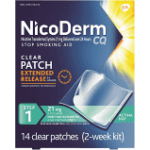They-Know-Why, You-Know-How Blog Marketing

Even if you’ve never smoked, there’s a lot to learn about blog marketing from the “Josh and Kayla know quitting is hard” TV commercial for NicoDerm CQ®, I was thinking just the other day.
Story power:
You may or may not ever have been addicted to nicotine, but as humans, we’ve always been addicted to stories, Alex Limberg writes in SmartBlogger.com. Stories, he explains, engage a deeper part of our brains than any logical explanation ever could. In the NicoDerm CQ® video, Kayla, leaving her dad’s hospital bedside to grab a smoke with Josh, realizes she needs to quit – she’s found her “why”.
People:
People-based marketing is driving change across the U.S. advertising industry, reports viantic.com. Even if your blog is devoted to marketing product, focus the content on how people will experience using it. The NicoDerm CQ® commercial shows “real” smokers experiencing the “real” challenge of quitting in a “real” human hospital setting. In blogging for business, where face-to-screen is the closest blog content writers come to their prospects, introducing people (both people working for the company and users of the product or service) can ignite the kind of personal connection that gets readers emotionally involved.
Empathetic:
The “You know why, we know how” slogan is catchy, to be sure. More importantly, the tag line creates an emotional response. While advertising communicates a message about what a brand does, the way the message is conveyed has a greater influence on how likely consumers are to buy, David Brandt of Nielsen explains. Ads that make people feel closer to a brand have a positive empathetic score.
Targeted:
Obviously, the Nicoderm CQ® ad is focused on a target market – viewers who are smokers, and smokers who know they need to quit. In the same manner, business blogs must be targeted towards the specific type of customers you want and who will want to do business with you. Everything about your blog should be tailor-made for that customer – the words you use, how technical you get, how sophisticated your approach, the title of each blog entry – all of it.
Advertising is “push marketing, while blogging is “pull marketing”, designed to attract searchers who have already identified their own need for a particular product or service. Those searchers already know why.What your blog content needs to demonstrate is this: you’ve done your homework and understand their “why”. Your function is to furnish the “how”!





Follow us online!